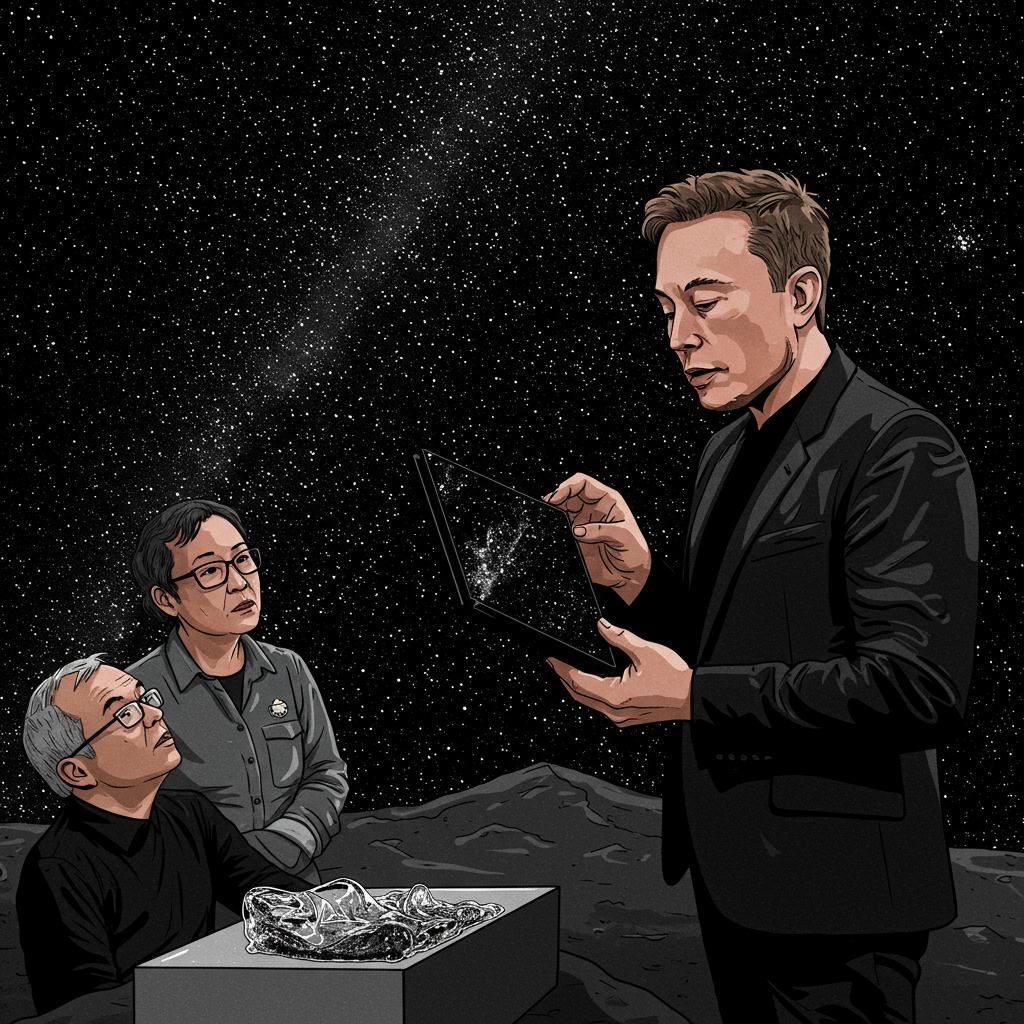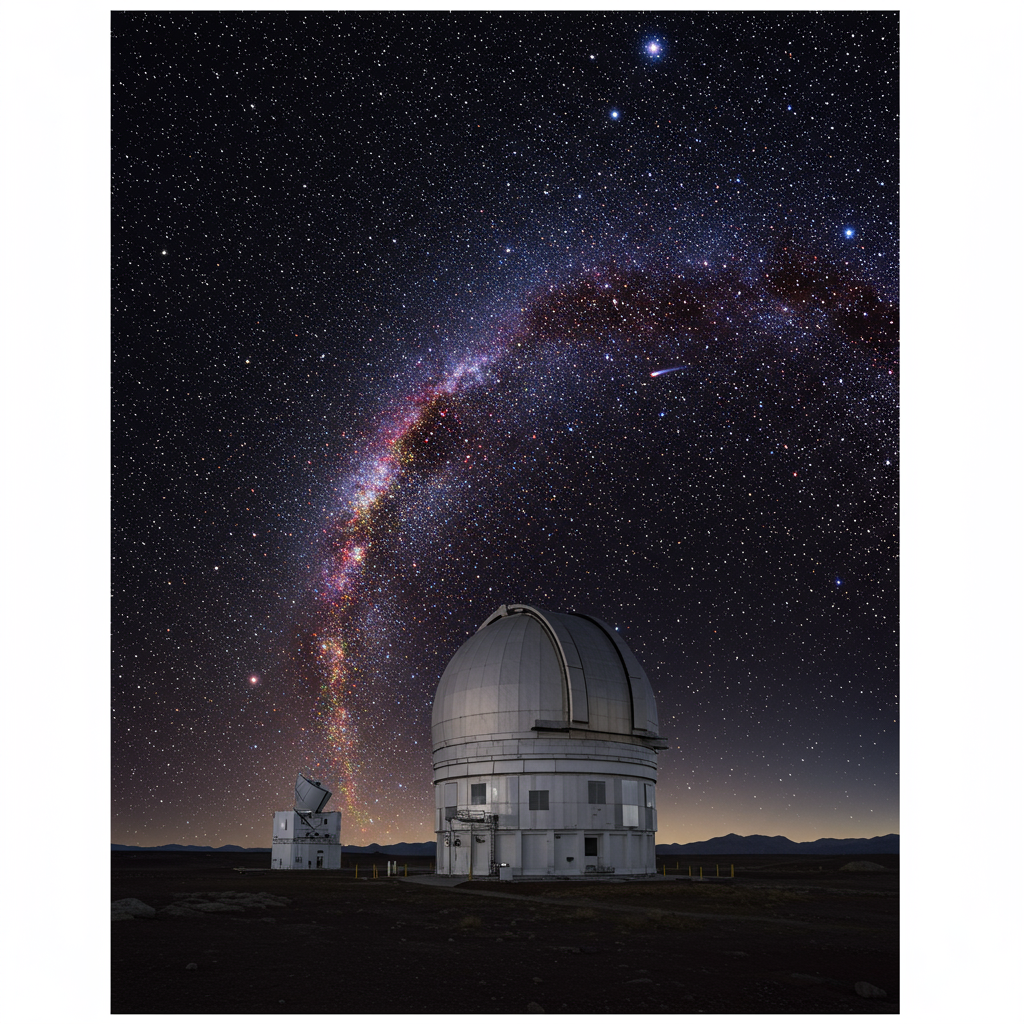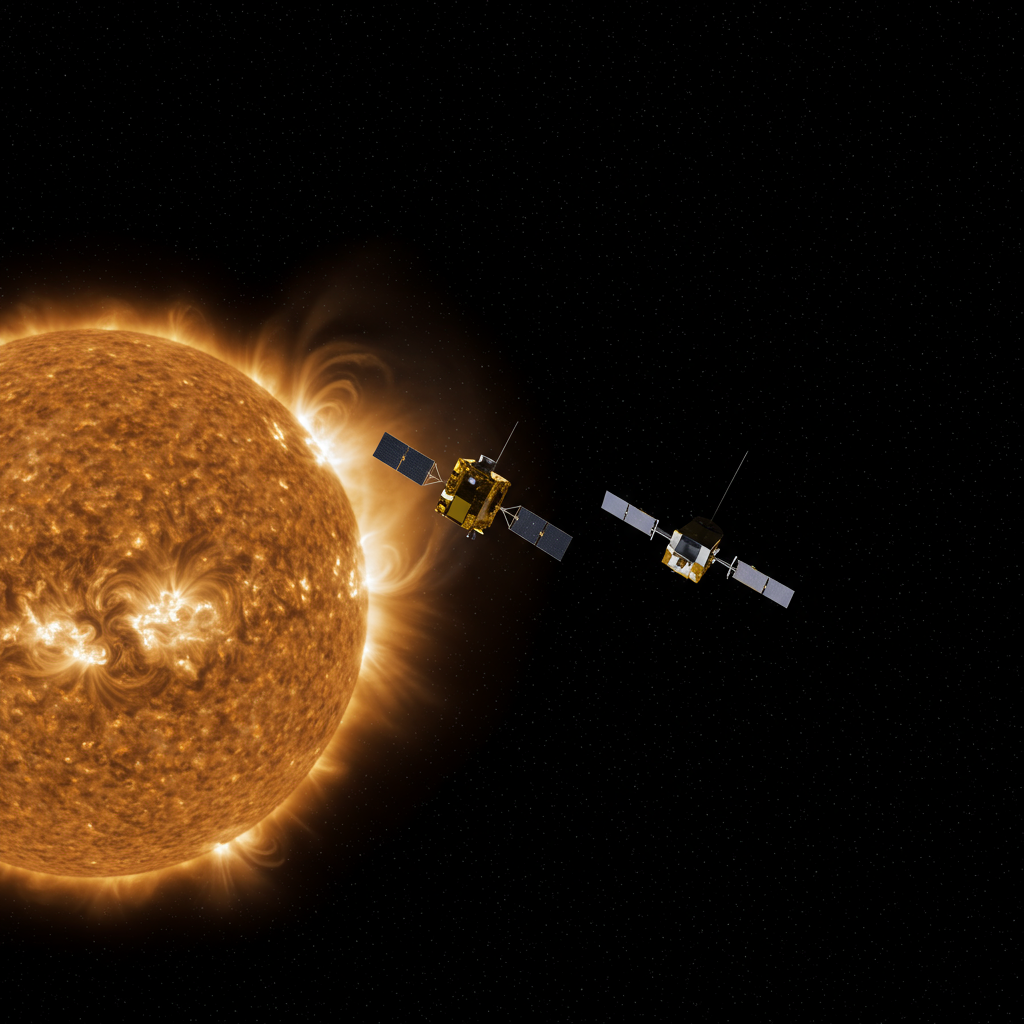The night sky is changing. As thousands of new satellites launch into orbit, they reflect sunlight, creating bright streaks that interfere with astronomical observations and alter our view of the cosmos. This growing problem, particularly from burgeoning mega-constellations like SpaceX’s Starlink, poses a significant threat to ground-based astronomy, potentially compromising research from major observatories.
For years, Vantablack, the world’s darkest material, seemed like a novelty – perhaps best known for making a BMW X6 appear to vanish. However, its creators, Surrey NanoSystems, are now proposing a genuinely practical application high above Earth: coating satellites to absorb sunlight and drastically reduce their visibility.
The Growing Problem of Satellite Light Pollution
The explosion in satellite numbers, driven by projects like Starlink aiming to provide global internet, is creating unprecedented light pollution. With thousands already in low Earth orbit (LEO) and plans for tens of thousands more, these satellites catch the sun’s rays, appearing as bright trails across sensitive telescope images. This isn’t just an inconvenience; it can ruin scientific data. Major upcoming facilities, like the Vera Rubin Observatory, anticipate that a significant percentage – potentially up to 40% – of their images could be degraded by satellite streaks, jeopardizing the return on substantial investments in astronomical research.
The issue is particularly acute for LEO satellites, which orbit closer to Earth and reflect more light observable from the ground. While satellite operators are exploring various mitigation strategies, the sheer scale of planned deployments means the problem is escalating rapidly.
Introducing Vantablack 310: Space’s New Dark Coat
Surrey NanoSystems believes its super-black technology can offer a solution. They’ve developed a new, more robust version specifically for space applications: Vantablack 310. Unlike earlier, delicate versions of Vantablack based on carbon nanotubes, Vantablack 310 uses a proprietary blend of carbon black and special binders. This makes it durable enough to be handled by engineers during satellite construction and tough enough to withstand the harsh conditions of space, including intense radiation and temperature extremes. Simulations have shown this new coating can endure the equivalent of three years in orbit with negligible degradation, outperforming competitor paints.
While the original Vantablack absorbed over 99.9% of light, Vantablack 310 is slightly less performant, reflecting about 2% of light across the visible and near-infrared spectrum. However, this minimal compromise in light absorption is a worthwhile trade-off for the significant gain in durability and practicality required for space use. Compared to standard space paints that might reflect around 5% of light or uncoated satellite surfaces which reflect substantially more, a 2% reflection rate offers a dramatic reduction in brightness. This improvement could make satellites far less visible, potentially dimming them to a magnitude of 7, rendering them invisible to the naked eye.
Putting Vantablack 310 to the Test
To validate the concept, Surrey NanoSystems has partnered with the University of Surrey for a real-world space trial. They plan to coat one side of a shoebox-sized CubeSat called Jovian 1 with Vantablack 310. The coating will be applied to the rear of a deployable solar panel. Once in orbit, ground-based measurements will monitor the satellite’s brightness as it rotates, comparing the reflectivity of the coated side to the uncoated parts. This will provide crucial data on Vantablack 310’s effectiveness in reducing light pollution in the actual space environment.
Previous attempts by companies like SpaceX to use dark paint have sometimes faced challenges, including potential overheating issues. The developers of Vantablack 310 are confident their material’s properties will mitigate such problems, offering a more viable long-term solution.
Beyond Light: Other Satellite Challenges
While Vantablack 310 holds promise for combating light pollution, it’s important to recognize that it addresses only one aspect of the environmental and scientific challenges posed by mega-constellations. The proliferation of LEO satellites raises several other significant concerns:
Radio Frequency Interference: Satellites constantly beam radio signals to Earth for communication, interfering with the faint radio waves astronomers use to study distant cosmic phenomena. This interference can be even more severe than optical light pollution, disrupting crucial radio astronomy observations and competing for limited frequency spectrum.
Collision Risk: With thousands of objects in LEO, the risk of collisions is increasing dramatically. Starlink satellites alone have been identified as a primary source of close encounters, accounting for a substantial majority of near misses in orbit and necessitating evasive maneuvers by other spacecraft.
- Atmospheric Impact: As satellites deorbit and burn up in the atmosphere, the materials they are made of, particularly aluminum, are converted into aluminum oxide (alumina) particles at high altitudes. Scientists are concerned about the potential long-term effects of this influx of human-made particles on the ozone layer and the atmosphere’s ability to reflect sunlight, which could have unpredictable climate impacts.
- autos.yahoo.com
- www.space.com
- www.space.com
- www.yahoo.com
- www.space.com
Vantablack 310 represents a valuable technological step specifically aimed at preserving the dark sky against light pollution from satellites. The upcoming trial on Jovian 1 is a critical step in demonstrating its effectiveness. However, addressing the full range of impacts from mega-constellations – from optical and radio interference to collision risks and atmospheric effects – requires continued innovation, industry responsibility, and potentially international policy cooperation to ensure both the benefits of satellite technology and the preservation of scientific discovery and the environment for future generations.




